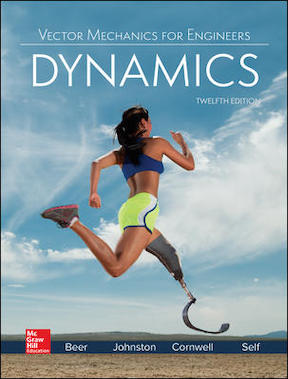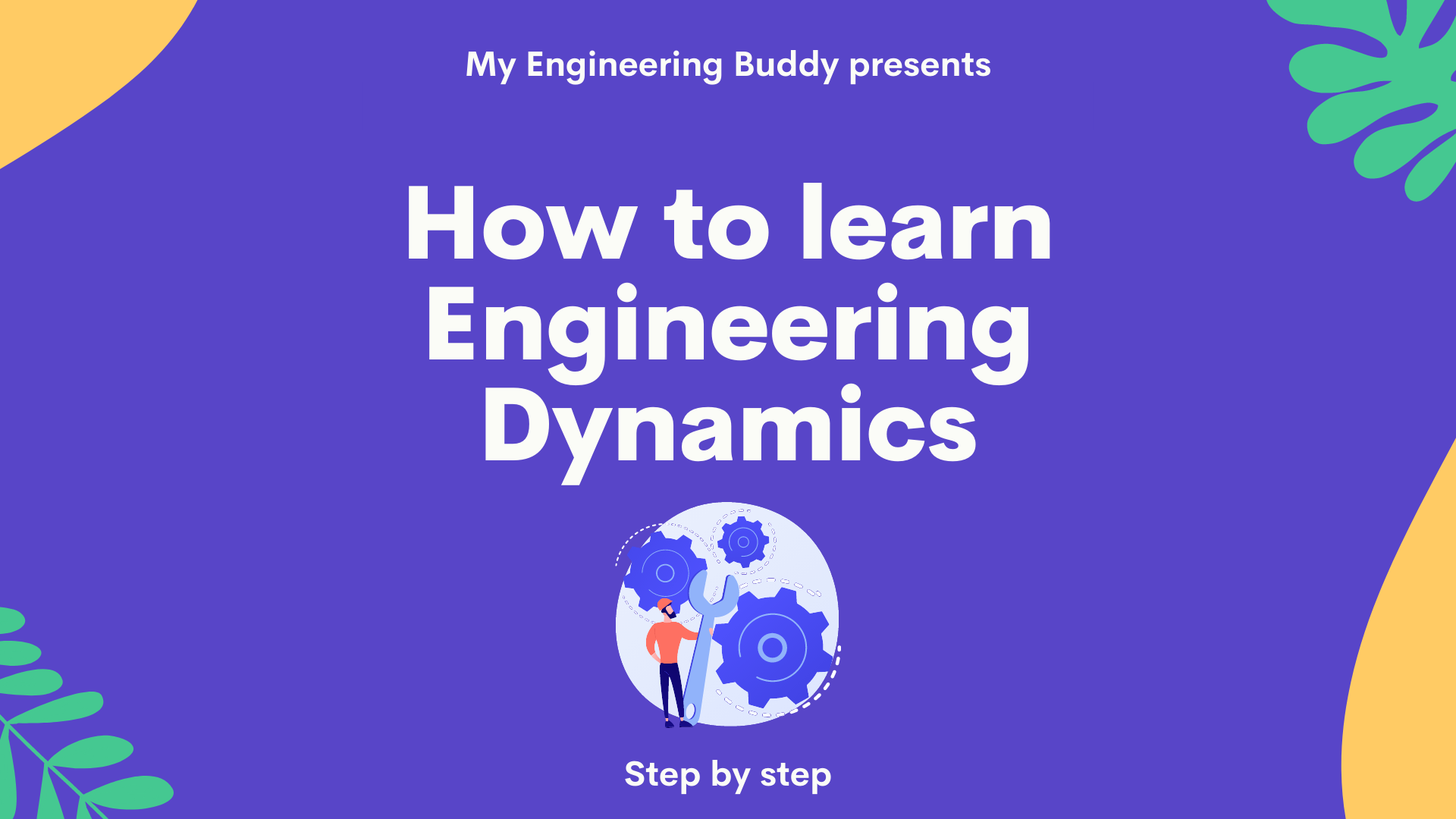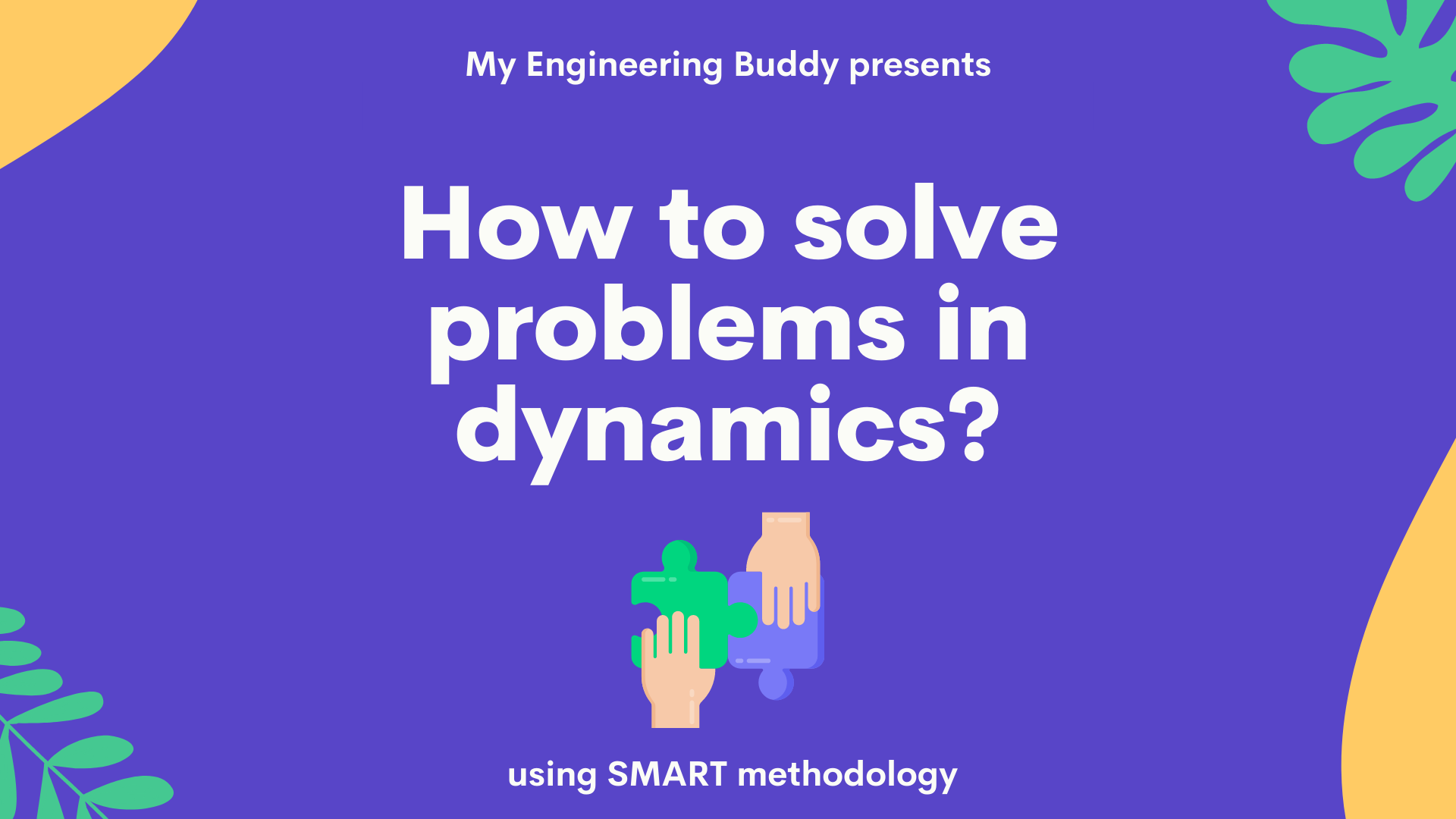Get Private 1:1 Online
Engineering Dynamics Tutor
Want to learn Dynamics? Or just need to get your HW & exams done? (Kinematics, Kinetics, Rigid bodies, Vibrations etc). Whatsapp for 20min trial!
Ace your Exams & Homework
Top Tutors • Top Grades • 24X7 • Affordable • #1 Dynamics tutoring service
Our Dynamics Tutors!
Don’t compromise with your Grades! Start getting ![]() in your Exams and Homework with an amazing Dynamics tutor.
in your Exams and Homework with an amazing Dynamics tutor.
Pankaj K
Student’s Rating 4.97/5

Engineering Dynamics (Mechanics 2)
Engineering Statics (Mechanics 1)
Neeraj K
Student’s Rating 4.93/5

Engineering Dynamics (Mechanics 2)
Engineering Statics (Mechanics 1)
Jitendra S
Student’s Rating 4.92/5

Engineering Dynamics (Mechanics 2)
Engineering Statics (Mechanics 1)
Testimonials
Top Mechanics-2 tutoring
I am studying at Stanford University, and the mechanical engineering department is advanced. I stumbled upon engineering dynamics in my previous semester. Without MEB I would have failed.

Hannah
Stanford University
Dynamics made easy!
The questions discussed by our professor were way too hard, and everyone was struggling. The dynamics tutors of My Engineering Buddy helped me ace this course. Kudos. Love from Sharjah 💗

Nada
Sharjah University
Top Dynamics HW help
They taught me how to simplify a complex dynamics problem. I learned the finer details of this subject and mastered it eventually. They also helped me do a few of my homework in dynamics. I topped my class. 😊

Mustafa
Kuwait University
Online Dynamics Tutoring
Welcome to the online tutoring hub for engineering dynamics (Mechanics 2)!
Get online tutoring and homework help in Dynamics with top tutors.
You have come to the right place to get personalized online dynamics tutorials from the best experts in the online education arena. We have built a virtual platform where you can learn dynamics at your own pace and ask as many explanations as you want. Our tutors know how to help you get top grades. They are committed to helping you excel in your academic program and, subsequently, your career. You can utilize our online tutoring service for your college or university program or prepare for an entrance exam for higher studies.
What is Engineering Dynamics?
Engineering Dynamics is also called Mechanics 2 or Dynamics. Although not mandatory, a good knowledge of Mechanics 1 or statics is very beneficial for learning dynamics. However, Physics-1 is the foundation of dynamics. Unless you have sound knowledge in Physics-1, there is no way you can master engineering dynamics ever.
For mechanical engineering, Dynamics is a vital subject that the student must learn and master. It’s the foundation for more advanced subjects like mechanical engineering design and Mechanical vibrations. Students need to do a research project and a design project in the fourth and final year, concluding the four-year mechanical engineering degree.
It’s evident from the above discussion that it will be challenging to become an excellent mechanical engineer if you do not understand Dynamics well. Aerospace/aeronautical engineering and Automobile Engineering, Marine Engineering, and Robotics also use engineering dynamics extensively.
Dynamics is a branch of mechanics that helps us understand the relationship between forces and motion. It is the study of particle and rigid body motion. It also deals with equilibrium caused by the application of forces.
It is a foundational subject for many other advanced engineering subjects. Dynamics is an engineering mechanics course taught in university-level engineering programs. It studies how objects behave when they are in motion. Dynamics is vital in the development of problem-solving skills. It helps you to assess how bodies react to forces and consequently move following the rules of mechanics.
Best dynamics books for reference:

- Engineering Mechanics: Dynamics – Hibbeler
- Vector Mechanics for Engineers – Ferdinand P. Beer
- Engineering Mechanics: Dynamics, SI Edition – Andrew Pytel
My Engineering buddy has some of the finest online engineering dynamics tutors that you can ever find online. We have a long track record of almost 15 years in delivering online tutoring and homework help services to students from various parts of the world. We guarantee top grades. Due to our strict quality control process, we maintain an excellent pool of top tutors. Although we manually check the sessions conducted by a tutor for quality, students’ feedback is the leading factor when we rank a tutor.
What is special about My Engineering Buddy online dynamics lessons?
You can book our virtual online sessions from anywhere around the world. We use an online whiteboard for the interaction of the student and the tutor. What you need is a laptop computer or a tablet like an iPad and high-speed internet connectivity. You can select the topics, learn the theory and get step-by-step problem-solving help. Unlike a regular classroom, there is no restriction on how much time you can spend on a particular topic or problem. You can upload a file and get the tutor’s help in understanding anything about the subject where you need more clarity.
Why personalized online Dynamics tutoring sessions are an effective way of learning?
The rate of success in dynamics is not as good as some of the other engineering subjects you will encounter in your academic program. Add to that the distributed attention of teachers in a typical classroom. As a result, many students fall behind in their courses. Consequently, they lose interest and fare poorly when they take their quizzes and exams. We can avoid this situation if a student is taught in a way and at a pace that maximizes the individual’s learning potential.
When is a good time to get our support to boost your learning?
The sooner, the better. If you begin learning dynamics early, you will get a headstart in a subject which many find challenging. You can be better prepared even before your regular college or university classes to accelerate your learning. The traditional classroom sessions can act as refresher sessions for you. It will help you get an edge, and you can avoid falling behind in the class. You can gain immense knowledge from these 1-on-1 sessions to gain expertise in dynamics.
Who has been learning dynamics through online tutoring sessions from My Engineering Buddy?
We have offered online tutoring services for many subjects, including physics, math, calculus, statics, and dynamics, for over a decade now. We get students from around the world, including the USA, the middle-eastern nations like Kuwait, Saudi Arabia, the UAE, Oman, Sweden, Great Britain, Mexico, Korea, Australia, and many other countries. So far, we have helped thousands of eager students from numerous universities, including the John Hopkins University, Georgia Institute of Technology, University of Rochester, and Kuwait University.
How do our students fare in their university programs?
Most of our students perform very well. They are confident with their preparation, and it helps in getting excellent scores. They accurately solve problems due to a strong base of conceptual learning of the curriculum. We hear back from many of our former students about their success. It keeps us motivated to provide quality online education options to the student community.
What else do we offer to dynamics students?
We can offer assistance in engineering dynamics lab assessments, project reports, and written assignments. We also provide 24X7 homework help service to dynamics students to help them keep their course on track. It helps them juggle their priorities in the relentless competitive environment.
What are the prerequisites for studying dynamics?
One needs an understanding of fundamental differential and integral calculus for learning dynamics. Statics, which is another branch of mechanics, is also a prerequisite for dynamics. You should be able to draw free body diagrams and compute moments of inertia.
How can I learn Dynamics online?
Click here for a free online course by MIT on Dynamics (Will take you to the MIT website, opens in a new tab)
Read the article below to learn tips and tricks on how to learn engineering dynamics

How to learn Engineering Dynamics? In this section, we will discuss the strategies useful in learning it.
Engineering Dynamics is also called Engineering mechanics 2 or simply mechanics 2. As the name suggests, it is a study of moving things and not stationary.
So what exactly is the difference between the study of moving things and stationary things? Well, movement of any sort is usually not at a constant velocity, and we know that changing it induces acceleration. As per Newton’s second law of motion, F=ma, a force is generated due to acceleration. It complicates the situation, so dealing with Dynamic Systems is much more complicated than dealing with Static Systems. (We study Static Systems in Engineering Mechanics 1 or Statics course.)
Is Engineering Dynamics hard?
Yes. Studying engineering dynamics is much more challenging than engineering statics because to solve a dynamics problem, you need to include extra forces. More the number of forces, the more complicated it becomes.
Before you start learning engineering dynamics
Revise Physics and calculus:
You must have studied Physics with calculus before you can learn dynamics. In fact, engineering dynamics is just an extension of Physics 1. There are hardly any new concepts, but the application is so vast that students often struggle with it a lot.
So we suggest you revise physics and calculus concepts again before you start to learn engineering dynamics.
Chose a good textbook:
If you choose a terrible book, you will not learn well. We suggest vector mechanics for engineers: Statics and Dynamics by Beer, Johnston. A similar book by RC Hibbeler is also quite good.
Once you have done the above two steps, it is time for the actual study. To make your study more productive, you can follow these tips:
Make a study plan:
Following your professor’s class notes and the prescribed textbook is best. Study in the same sequence your professor is teaching you. Always read one chapter in advance to never lag in the lectures. This way, your understanding will be better in the live classes, and you will even participate in the discussions. You will start loving the lessons, and learning will not burden you.
Follow a routine:
Just attending the lectures and participating in the class discussions is not enough. You need to do self-study too, and for this, you need to follow a routine. You can devote 2 hours per day (say) from 7 PM-9 PM, 5 days a week for dynamics. Studying the same subject at the same time helps you focus better.
Studying a little every day is far better than doing a lot of it just once a week. Consistency in the study is vital. Skipping a few days is okay as long as you study most days.
Remove distractions:
Your mobile phone is a source of enormous distraction. Notifications of your friend’s messages, spam emails, marketing calls, Facebook updates, Instagram alerts, YouTube videos, etc., are things that are not going to help you in your life. You must devote 100% of your time to studying only; otherwise, it will not be very productive.
Your study space should not have noise from outside, and your family or friends should not be disturbing you by any means. Closing the door of your study room is a great option to filter out outside noise.
You can also do yoga and meditation to calm your mind.
No multitasking:
Focus on one thing at a time. For example, listening to music and studying may sound very interesting, but it does not help you learn dynamics. Listening to music while doing a routine job is okay, but when you are learning something complex like Dynamics, then it is a distraction rather than any help.

How to solve problems in Engineering Dynamics?
Dynamics is not an easy subject, in fact its one of the most dreaded subject and it is not uncommon to see many students repeating this course many times. In this blog post we will explain how to use SMART methodology to solve engineering dynamics problems.
What is SMART methodology?
The SMART methodology is a method of solving problems using the 4 step approach: S= Strategy, M=Modeling, A=Analysis, RT= Reflect & Think.
So, How to solve problems in engineering dynamics (using SMART methodology?)
Step 1. Strategy
Before we start solving a problem, we need to have a strategy. At this stage, we read the problem, and based on the quantities given and quantities to be found, we think of the concepts that we can apply to solve the problem. We first correlate the given problem to a real-life situation as with any science problem.
We can work backward also at this stage, by which we mean- if we have to find “A” and A depends on B, C, D., but C is also unknown. C depends on B, E, F, where B, E, F are known. So we can find C first. And once we find C, we can find A. We call it working backward.
For example, if the question asks us to find the speed of the bullet after piercing a hanging mass, then we think of the equation that we can use to find it. If that equation contains an unknown other than the speed of the bullet, then we need to find that unknown first, and then only we can calculate the speed of the bullet.
Step2. Modeling
Once you read and understand the problem and have a strategy in place, it is time to act. The first step is to define a system where we set things that we need to include and things that we need to exclude. Then we draw a model of the given system. If there are forces involved, draw FBDs(Free Body Diagrams). You can also write down the known and unknown quantities if it helps you visualize the problem better.
Step3. Analysis
It is the actual problem-solving step. Here we use the fundamental principles of mechanics to write equations of motion (or rest) for each body identified in the System. If we do not get enough equations to solve the unknowns, we check the System and see if we can include more bodies that we can fit in the System and get more unique equations.
If it does not work, check if there are more fundamental principles that we can apply and if the chosen System is correct. Sometimes, we need to change our strategy altogether and start afresh (i.e., start again from step 1=strategy).
If everything is correct, you just need to do the calculations (for numerical problems). We can either do everything on paper or use a calculator/computer to find the final answer.
Step4. Reflect & Think
Solving a problem is not the end of the world, and our job does not finish at step 3. We need to check if the result/answer is valid and looks plausible. For example, if you throw a ball with a speed of 10 m/s, you can not expect it to go 10 km far. If you get an answer that does not make any sense, reflect on it and think if there are things that you need to change.
If the answer to a displacement problem comes negative x, it means the distance is x, but it is in the opposite direction of the positive axis defined.
Checking the consistency of the units is also a very effective method. We can not get 10 meters for a problem that asks for the time period. This concludes-How to solve problems in engineering dynamics using SMART methodology.
(Concept Credit: Vector Mechanics for Engineers- Statics and Dynamics by Beer, Johnston. Published by McGraw-Hill Education)

Engineering Dynamics Topics in details
Engineering dynamics (mechanics 2) has several topics that we need to learn. We can divide it into the following parts.
Learn Kinematics of particles
Kinematics is the study of motion without going into the cause of it. In comparison, particles mean a body with non-zero mass but zero (almost insignificant) size. This chapter does not deal with forces, and it only talks about point objects.
Here we start with the motion of a particle having constant acceleration and in a straight line. Then we learn how to solve problems where acceleration is variable, and we can no longer use the simple kinematics equations. As a result, we need to start using basic calculus to deal with such problems. Then we learn how to deal with curvilinear motion where the particle no longer moves in perfectly straight lines. We also study rectangular and non-rectangular axes systems.
To do well in this chapter, you must draw a clear diagram that helps visualize the problem. Also, you must learn SMART methodology for solving problems in engineering dynamics.
Learn Kinetics of particles-Newton’s second law
Kinetics refers to the study of motion and its causes (forces). In the previous chapter, we did not cover the cause of the motion (external and internal force). But, this chapter studies Newton’s second law of motion viz F=m*a. This equation comes from Newton’s second law, which effectively connects motion ( acceleration) with the cause of the motion (force). It is a critical equation and one of the most important in entire mechanics. The concept of linear momentum, angular momentum, and central force motion is introduced, and several problems are given for practice.
Learn Kinetics of particles-Energy & momentum methods
The concept of work, energy, impulse, and momentum is introduced with two powerful tools, namely “conservation of energy” and “conservation of momentum.” We can solve almost any mechanics problem using the force method (F=ma), but energy and momentum conservation theorems make the solution extremely easy in many cases. So we must learn how to solve dynamics problems using these two conservation methods. This chapter also studies “impacts” or collisions that primarily use the conservation of momentum method.
Learn System of particles
There is nothing called a point object or particle in the real world. Everything has non-zero size, and we must learn how to solve problems where we can no longer ignore the size of the body. Luckily, the concepts that we have studied for point objects can also be extended to a system of particles. In this chapter, we learn how to Modify the existing laws and equations for point particles to a system of particles.
Learn Kinematics of rigid bodies
The equations that we developed and learned in the previous chapter for a system of particles are hard to use in complicated real-life situations. Luckily, we can assume a vast majority of bodies as rigid bodies where the relative position of particles does not change.
We start with a rigid body’s translation and fixed axis rotation and move on to general plane motion. We begin with velocity analysis using vectors which is relatively more straightforward. A simpler graphical velocity analysis method also exists, called “Instantaneous center of rotation” (a similar approach for acceleration analysis does not exist). We then move on to acceleration analysis which is slightly more complex. We then learn about the “rotating axis,” which is extremely difficult for the students. The motion of rigid bodies in space is even more complex, and any engineering colleges in the USA hardly teach it. However, few universities in the USA, Kuwait, UAE, Jordan, and Saudi Arabia cover this topic. In the UK, though, they usually teach every topic, and nothing is optional.
Learn Plane motion of rigid bodies: Forces and acceleration
Here we learn the Kinetics of Rigid bodies and constrained plane motion.
Learn Plane motion of rigid bodies: Energy and momentum methods
Here we learn about energy and momentum methods for rigid bodies, and as an application, we study “eccentric impacts.”
Learn Kinetics of rigid bodies in three dimensions
This chapter applies the concepts learned so far in 3-dimensional problems. We study the Motion of “Gyroscope” as an application.
Learn Mechanical vibrations (Basic)
We learn about SHM (Simple Harmonic Motion) without any damping and then move on to the more complex-Free, Forced, and damped vibrations. We study only the basics here as vibrations are quite an advanced subject in itself. Hence, a more detailed course on vibrations is there for mechanical engineers, which they cover in the whole semester.
(Chapters are taken from Vector Mechanics for Engineers- Statics and Dynamics by Beer, Johnston. Published by McGraw-Hill Education. View source.)
To get top grades in your Dynamics exams and online homework, contact us on WhatsApp.
Dynamics topics
We offer following Dynamics tutoring services:
- Live Online Homework Help,
- Live Online Tutoring Sessions,
- Lab Reports & Projects
A quick list of topics with which our engineering dynamics tutors can help you is as below:
- Kinematics Of Particles
- Kinetics Of Particles: Newton’s Second Law
- Kinetics Of Particles: Energy And Momentum Methods
- Systems Of Particles
- Kinematics Of Rigid Bodies
- Plane Motion Of Rigid Bodies: Energy & Momentum Methods
- Kinetics Of Rigid Bodies In Three Dimensions
- Mechanical Vibrations
(Source: Vector mechanics for engineers. Dynamics- Ferdinand P. Beer, Johnston)
A similar book by R C Hibbeler is also top-rated and covers more or less the same topics, although at a lesser depth.
Topics in dynamics:
Kinematics of a Particle
- Projectile Motion
- Curvilinear Motion – Rectangular Coordinates
- Rectilinear Motion
- Curvilinear Motion – Normal & Tangential Coordinates
- Constrained Motion of Particles
- Relative Motion
Kinetics of Particles: Force & Acceleration
- Equations of Motion
- Newton’s 2nd Law
- Rectangular Coordinates
- Normal & Tangential Coordinates
Kinetics of Particles: Work & Energy
- Work & Energy
- Work of a Force
- Potential Energy
Kinetics of Particles: Impulse and Momentum
- Linear Impulse and Momentum
- Angular Impulse and Momentum
Kinematics of Rigid Bodies
- Absolute Motion
- Rotation About A fixed axis
- Motion Relative to Rotating Axes
- Relative Velocity
- Relative Acceleration
Kinetics of Rigid Bodies
- Fixed Axis Rotation
- Translation
- General Plane Motion
